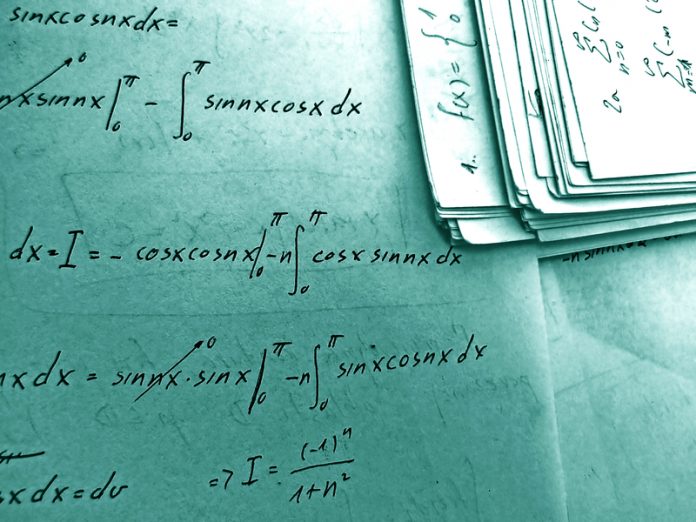Julien Scheibert & Alain Le Bot at CNRS investigate the fascinating world of friction
Recently found in the “Scientists” section of the dating ads: “I am a young tribologist (researcher in the field of friction). My ambition is to elucidate the mystery of the force resisting relative motion of bodies in contact, or friction force. My ancestor, Charles-Augustin Coulomb, discovered more than 200 years ago that the friction force is the product of the force pressing 2 solids into contact and the so-called friction coefficient.
However, we are still unable to predict the value of the friction coefficient of a given pair of materials. After years of investigations, I am convinced that the friction force is the sum of the forces acting on many micro-entities buried at the contact interface. Those are so numerous that I cannot count them one-by-one. This is why I seek a statistical physicist able to make sense of those large numbers. And maybe more…”
Tribologists ourselves, we share this vision of our research field. Macroscopic contacts are never single contacts. Consider for instance the contact between a car tire and a road (figure). It has the same typical size as a cell phone, but the road is rough and true contact only occurs close to the summits of centimetric pebbles. At the scale of pebbles, we discover new, smaller asperities forming the natural roughness of stone surfaces, at which individual micro-contacts are formed. At each step of zooming-in, down to the scale of molecules, we discover that whatever appears to be a single contact is highly divided!
There is no doubt that the total friction force is simply the sum of all individual micro-contacts forces and that each micro-contact force is simply the sum of all associated molecular forces. “Simply”? Not quite. In practice, we do not know how to measure the individual forces on those micro-entities (neither micro-contacts nor molecules) within the confined interface between 2 solids. And even if we knew how, the number of micro-entities is so large that such measurements would take ages to be performed.
This is where statistical physicists enter the game. They know how to replace our large, inaccessible number of details on the actual contact with a statistical description in the form of a single, easily usable mathematical function named probability density. By doing so, the specifics that make the contact between this particular tire and that particular road unique are deliberately lost.
In contrast, one can now accurately describe the most probable behaviour of such a contact. This represents a change of paradigm in which the exact description of reality is replaced by a collection of possibilities and their probabilities. This approach also fits industrial needs, as it informs about the generic behaviour of a series of products rather than that of a single one.
The use of such statistical approaches has already proved, in some particular cases, its explanatory power to connect friction behaviours at 2 different length scales. For instance, to relate the molecular scale to the micro-contact scale, Schallamach proposed a statistical model describing the velocity-dependence of the friction force of a rubber micro-contact as the attachment/detachment dynamics of rubber molecules on a track1. The model successfully explained the existence of a maximum friction force for a certain rubbing velocity.
A few years later, to relate the micro-contact scale to the macroscopic scale, Greenwood and Williamson described a rough elastic surface through a probability distribution of asperities’ heights2. By doing so, they showed that the area of real contact is proportional to the confining load applied to the interface, justifying the very existence of a friction coefficient.
In our own research, we follow the footsteps of those visionary tribologists. For instance, we have proposed a statistical framework into which most Schallamach-inspired attachment/detachment-based friction models from the literature appear as particular cases3.
Even more interestingly, we managed to couple such a description of the interfacial friction with a realistic depiction of the bulk materials in contact. In other words, we have developed a multiscale model describing the behaviour of two solids in contact from the macroscopic scale of their shape and elasticity, down to the microscopic scale of the loading/sliding dynamics of individual micro-contacts. Such a powerful tool allowed us to reproduce and interpret unexplained experimental observations of the onset of sliding of a rough contact interface4.
In particular, we found that the contact between deformable solids does not start to slide at the same instant everywhere along the interface. Just like in earthquakes, a portion of the interface starts to slip first (equivalent to the hypocentre), then grows and progressively invades the whole interface (equivalent to the seismic fault). We observed and explained the occurrence of very slow such invasions, reminiscent of the new class of slow earthquakes recently discovered, that one could qualify as “the dark matter of seismology”.
We claim that those successes in the field of friction have been made possible because tribologists managed to import and use some of the simplest tools developed by statistical physicists. Imagine now the breakthroughs that could be reached if statistical physicists would themselves bring the best of their knowledge and apply it to tribology! We wish our young tribologist the best for the dates to come. And maybe more…”
Please note: this is a commercial profile
References
1 A. Schallamach, Wear 6, 375 (1963)
2 J.A. Greenwood & J.B.P. Williamson, Proc. R. Soc. Lond A 295, 300 (1966)
3 K. Thøgersen et al., Phys. Rev. E 89, 052401 (2014)
4 J.K. Trømborg et al., PNAS 111, 8764 (2014)
please note: this is a commercial profile
Julien Scheibert
Researcher
CNRS/Ecole Centrale de Lyon
www.ec-lyon.fr/contacts/julien-scheibert
Tel: +33 4 72 18 62 26
Alain Le Bot
Researcher
CNRS/Ecole Centrale de Lyon
www.ec-lyon.fr/contacts/alain-bot
Tel: +33 4 72 18 62 75











